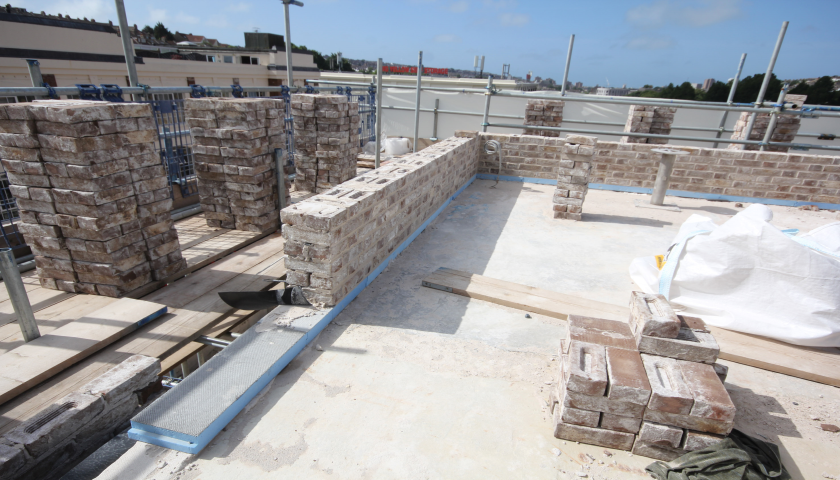The development of a new student accommodation building in one of the South Coast’s most popular towns has included the use of the proven-in-practice and very versatile Marmox Thermoblocks: specified to combat cold-bridging at the junction of its parapet walls with the property’s roof decks.
In total 800 of the 600mm long, 215x65mm Thermoblocks were supplied for the project by Dagenham based Encon Insulation Ltd., for the main contractor, Henry Construction, to lay during the development of the nine storey ‘Student Castle’ on Brighton’s Pelham Terrace. The work also involved using some 60 cartridges of Marmox MSP-360 sealant to secure the stepped overlap joints. The nine-inch (225mm) thick brick walls have been built directly on top of the Thermoblocks which are themselves bedded around the perimeter of the RC terraces and main roof slab.
The site agent for Henry Construction, John Keeley commented: “I have used Marmox Thermoblocks on a number of projects in the past – including with previous companies and always found them ideal for applications such as this, easy to cut and lay, while also being very robust.
In the case of the Student Castle here in Brighton we have employed them for a series of parapet walls at first floor level, then at the perimeter of floors 6, 8 and 9, where the private penthouse apartments are located. Inside the line of the parapet wall and the Thermoblocks, we are installing a felt membrane, covered by rigid insulation and then a single ply cap sheet, dressed up the inside of the wall, to complete the roofing work.”
Marmox Thermoblocks are available in widths of 100, 140 or 215mm and are formed from sections of XPS (extruded polystyrene) encapsulating two rows of high strength, epoxy concrete mini-columns.
These are attached at either end to the top and bottom layers of glass-fibre reinforced polymer concrete, to ensure a good bond with the rest of the structure.
As well as combatting cold-bridging at the base of blockwork walls, Thermoblocks are also often utilised to support timber frame construction or at vulnerable upper floor junctions including, as in the case of the Brighton project, beneath parapet walls. Crucially, a variety of details have been thermally modelled by the BRE to provide insulation values for use in SAP or other calculations, avoiding the punishing ‘default’ figure.
Despite the disruption caused by the Coronavirus lockdown, the project is still on course to be completed in time for the start of the next academic year this autumn, providing a total of 189 high specification student bedrooms, as well as five private apartments.


